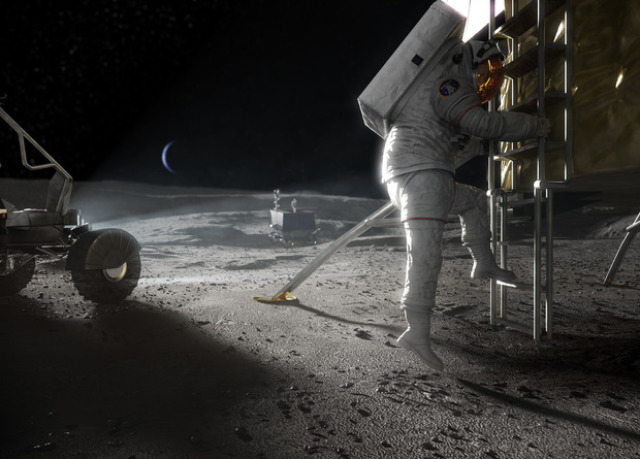NASA has announced a new competition within the NeXTSTEP program, the purpose of which will be to solve all sorts of technological and engineering tasks to minimize risks when developing a lunar landing system for the Artemis program. The cost of contracts can reach up to $ 45 million, and applications will be accepted by NASA in early August of this year, according to the agency's website.
Artemis was launched by NASA in 2019, today, in addition to the United States, the European and Canadian Space agencies are participating in it, as well as a number of countries, including Japan, the United Arab Emirates, Brazil and Australia. Artemis has several goals — to return people to the Moon, to create a near-lunar station Deep Space Gateway and a base on the surface of the Moon, as well as to conduct extensive scientific research, in particular, to deliver samples of lunar ice to Earth.
One of the key stages of the program is the creation of the HLS (Human Landing System) landing system, capable of providing the exchange of cargo and people between the lunar station and the lunar surface. [...] Three private American space companies initially participated in the competition: Blue Origin, SpaceX and Dynetics. In April of this year, it became known that SpaceX won the competition with its project of the superheavy reusable Starship system, but then NASA's choice was appealed by two other companies.
On July 1, 2021, NASA published a request for research work on a contract basis to develop a lunar landing system with minimal risks. Officially, it is known as Appendix N to the NeXTSTEP program (Next Space Technologies for Exploration Partnerships) and will fund initial research in the field of landing systems for the later stages of Artemis, which will begin after the landing of people on the Moon as part of the Artemis-3 mission . The cost of the contracts will be fixed and can be up to $ 45 million (in some cases up to a hundred), and the financing of the work itself will take place in stages. Proposals from participants will be received by NASA by August 2, and payments will begin in the fall.
Earlier, Roscosmos refused to cooperate with NASA in creating a lunar station and decided to implement the lunar station project together with China. Read more about this in the article "Village of Lunokhods" .
Alexander Voityuk

